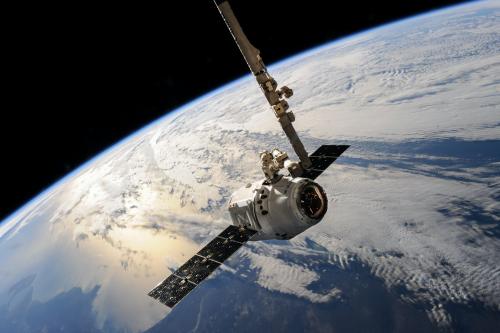The design and implementation of VHF Data Exchange System (VDES) services has the potential to revolutionise ship tracking communication in the decade ahead, providing major improvements in terms of cost-effectiveness, sustainability and safety over the current Automatic Identification System (AIS). However, the transition to VDES will not only provide the opportunity for positioning and communication – as the AIS system does – but will also open the door to new uses, such as e-navigation and autonomous shipping.
First identified almost a decade ago as a long-term solution to overloading issues on the AIS VHF Data Link (VDL), and a facilitator of the International Maritime Organization’s (IMO) ‘e-Navigation strategy’, VDES is well on its way to becoming an International Telecommunication Union (ITU) standard supported by the International Association of Marine Aids to Navigation and Lighthouse Authorities (IALA) and it is anticipated that both shore and ship side AIS infrastructure will be upgraded with VDES capabilities in the years ahead.
The system includes the two existing AIS channels and the messaging system Application Specific Messages (AMS), with the addition of a new highly flexible third component (VDE) for digital maritime communications of any kind. Importantly, VDES significantly expands the available bandwidth and allows for true two-way high-speed data exchange between ships, satellites and shore.
The satellite component of VDES (VDE-SAT) reached an important milestone at the ITU World Radiocommunication Conference (WRC) in 2019, when it was allocated a new radio frequency spectrum in the VHF band. By adding space-based capability to VDES, the communication system’s range increases from the shoreline to anywhere in the ocean, converting what is currently a predominantly coastal system into a global maritime system. VDE-SAT will be an important option for e-Navigation services as many will require close-to-real-time or, at the very least, periodic connectivity globally.
As well as the new radio frequency spectrum, another major driver helping to accelerate VDES closer to reality are the major advances in terms of access to space offered by small satellite constellations. These smallsats enable high-performance technology to be deployed faster and more economically than ever before and can be used in lower earth orbit (LEO) for higher data exchange speeds due to its lower latency.
Swedish/US partnership
This development was highlighted towards the end of last year with the formalisation of a collaborative partnership between Swedish aerospace contractor Saab, US satellite operator ORBCOMM and Swedish smallsat builder AAC Clyde Space to create a dedicated global maritime communication system based on VDES that will enable “ship-to-ship and ship-to-shore communication everywhere on the globe”.
“Our work with Saab and ORBCOMM to establish the next generation of maritime communications has been underway since August 2020, but the formalisation of this cooperation, now branded AOS, creates an important platform on which to fine-tune our efforts and develop value-driven commercial and government applications for VDES,” states AAC Clyde Space CEO Luis Gomes.
He adds: ““This will not only improve the safety of seafarers but will also contribute to a greener shipping industry – a critical part of the climate change mission. For example, with up to 32 times more bandwidth than the current, widely used Automatic Identification System, VDES can be integrated with e-Navigation systems to enable savings in fuel and emissions of up to 25 percent.”
Gomes says the ability to send information, instructions and commands to ships opens up an all-new set of applications, not only on existing vessels but also on future autonomous shipping.
The project is co-funded by the Swedish Transport Administration and will occur in phases, including both terrestrial and space-based demonstrations of selected applications. A demonstrator satellite, Njord-1, is slated for launch in mid-2022, with in-orbit VDES capability assessment expected to be completed in the first quarter of 2023. If successful, Njord-1 could be followed by a constellation of up to 100 satellites that will form a new part of the maritime communication infrastructure.
For the full article please see the January 2022 edition of The Naval Architect.




